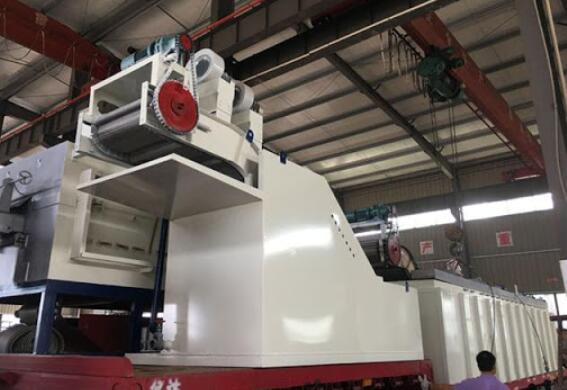Polysilicon reduction furnace
Design and application of electrical system for polysilicon reduction furnace

The main equipment of electrical system of polysilicon reduction furnace is high power voltage regulator. The voltage regulator is loaded with a pure resistance load made of polysilicon rods in series. The function of the voltage regulator is actually to electrically heat the load resistance and keep the surface temperature of the silicon rod constant (typically 1080 ° c). Silicon rod series of resistance is a changing resistance: first, the silicon rod rise in temperature from room temperature to 1000 ℃, Φ 8 silicon core diameter decreased resistance from a few hundred k Ω to dozens of Ω; Second, keep the silicon rod surface temperature of 1080 ℃, silicon rod diameter increased to Φ from Φ 8 150, silicon rods from dozens of Ω decline to dozens of m Ω resistance. It can be seen that the design characteristic of this type of voltage regulator is that the voltage and current of the voltage and current of the voltage regulator can be adjusted in a large range due to the large variation of the resistance of the silicon rod. According to the nature of the actual work, voltage regulator is divided into silicon rods heat temperature from room temperature to 1000 ℃ of preheating voltage regulator and silicon rod diameter increased to the final diameter from Φ 8 silicon rod surface temperature of 1080 ℃ and always keep the reduction of voltage regulator.
In the process of preheating the voltage regulator, the temperature of the silicon rod is heated from normal temperature to 1000℃. The main difficulty is that the initial resistance R of the silicon rod is too large, and the heating power is proportional to V2/R. Common methods include raising the temperature of cooling fluid in furnace wall, thickening the diameter of silicon core, mixing silicon core, injecting high-temperature plasma into furnace or placing halogen tungsten lamp, etc. Preheating voltage regulator working time more than ten minutes, power 30-200kva.
The output power of the reduction voltage regulator is used to heat the silicon rod, which in turn transmits the power to the reaction gas in the reduction furnace and the cooling fluid in the furnace wall by means of radiation, conduction and convection. As the diameter of the silicon rod increases, the flow of reaction gas increases, the heat taken away by the reaction gas in the furnace and the cooling fluid in the furnace wall increases, and the output power of the voltage regulator increases. The technical requirements for the reduction furnace are shown in figure 1. Reducing voltage regulator design must meet the craft with the diameter Φ change, power, current I and voltage V power supply requirements of P. At the same time, the problems of high voltage electrical structure, large current electrical structure, regulator parameter design caused by changes in load resistance, low power factor and harmonic problems caused by large voltage regulation range, circulation problems on structure, silicon rod hitting the wall, crack rod detection, power off and power on are mainly considered.
The electrical system of polysilicon reduction furnace has a computer management and operation system besides voltage regulator. Its main functions are:
1. Conduct digital communication on all the electric equipment of reduction furnace (voltage regulator, transformer, switch cabinet) under the jurisdiction.
2. Make screen display and curve record of the electrical data of all the electric equipment in the reduction furnace under my jurisdiction, and make screen prompt and record of the faults of all the electric equipment in the reduction furnace.
3. Perform screen operation on all electric equipment of reduction furnace under the jurisdiction.
The system adopts double redundant computer and optical fiber communication, with high reliability and strong anti-interference ability.
At present, the international implementation of China's reduction furnace electrical system technology blockade, similar imports of the international level of the early 1990s. In order to design an electrical system that can adapt to the increasing number of silicon rods, increasing diameter and increasing gas pressure in our reduction furnace, we still need to rely on the joint efforts of our electrical counterparts.






